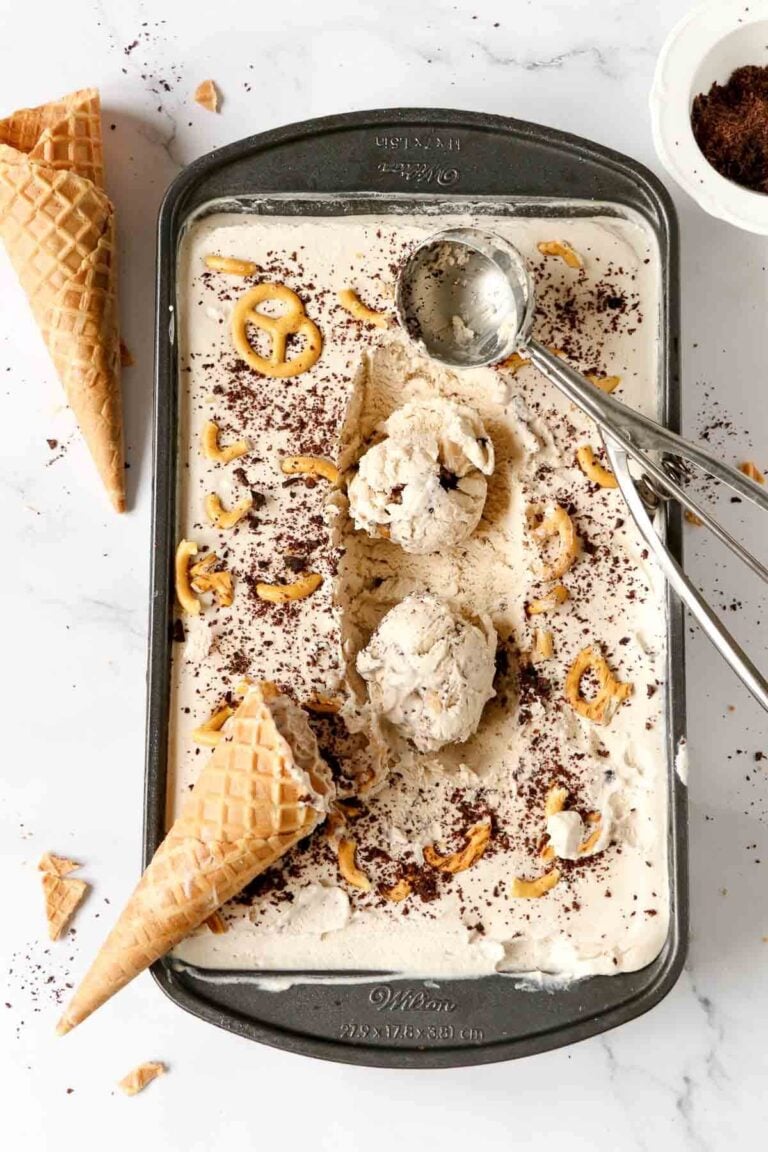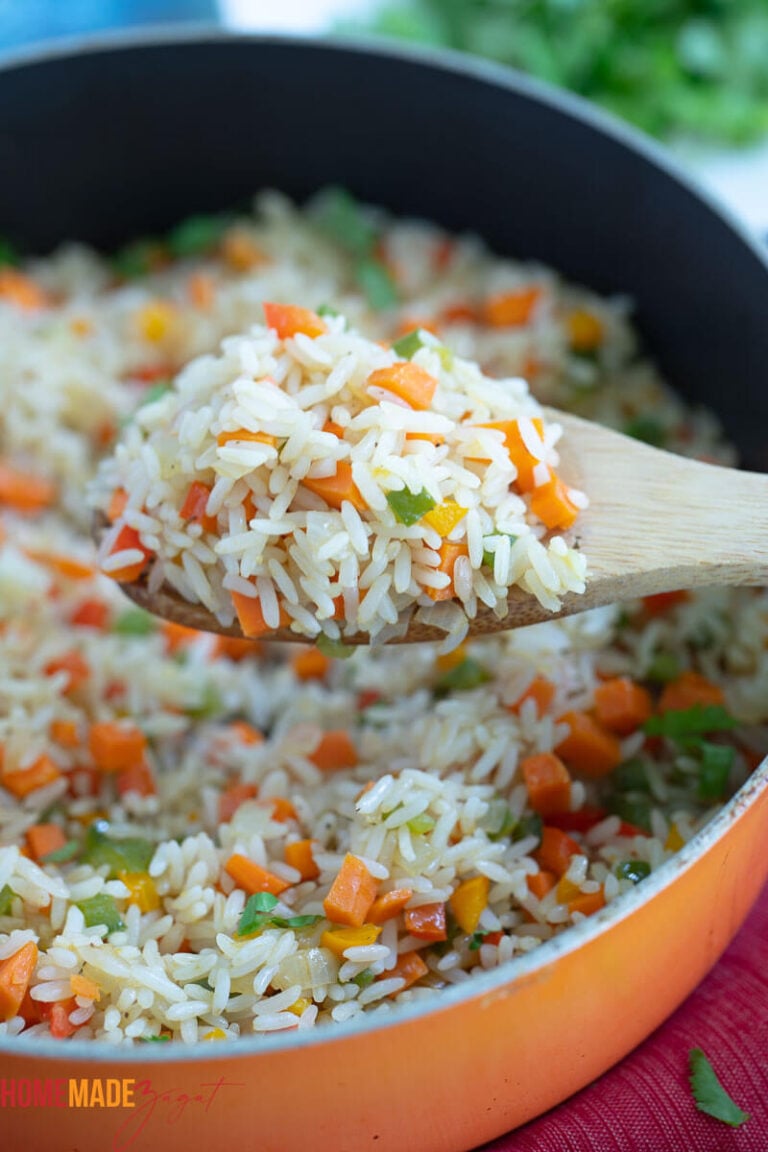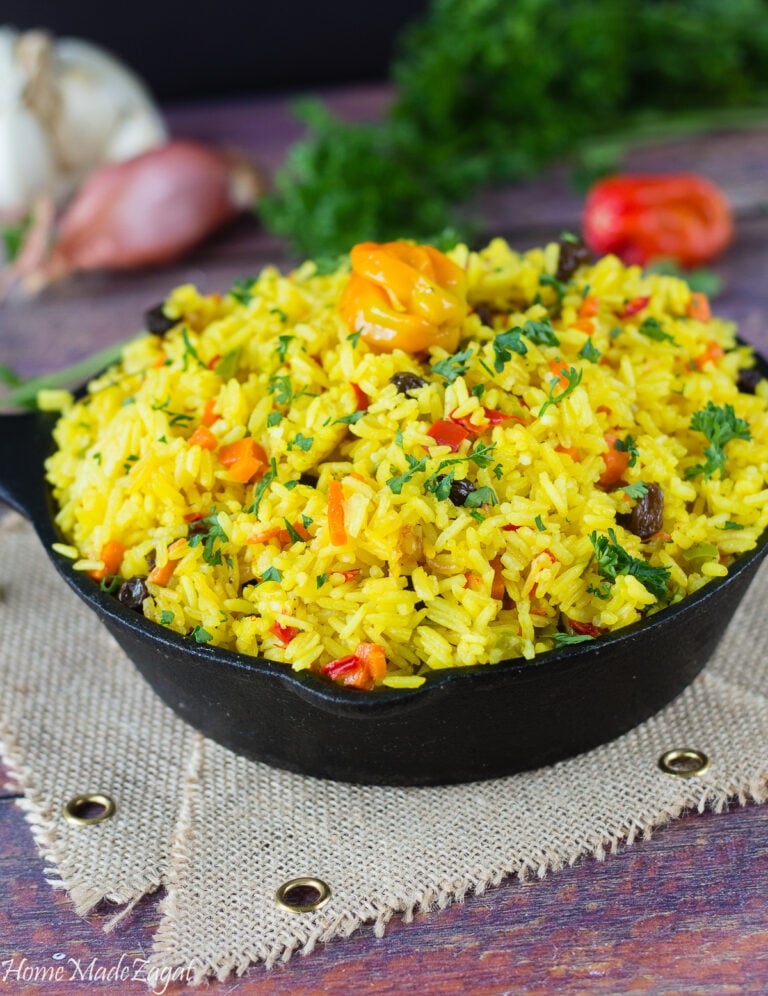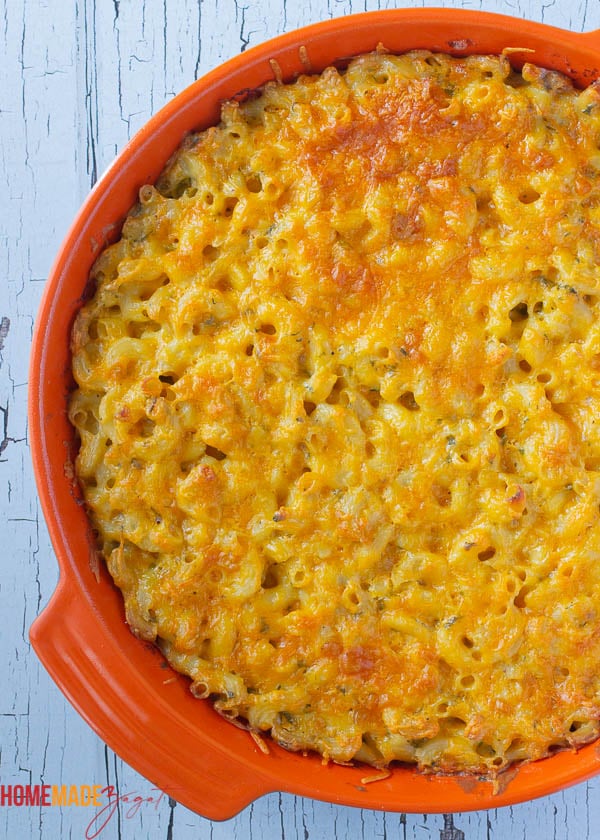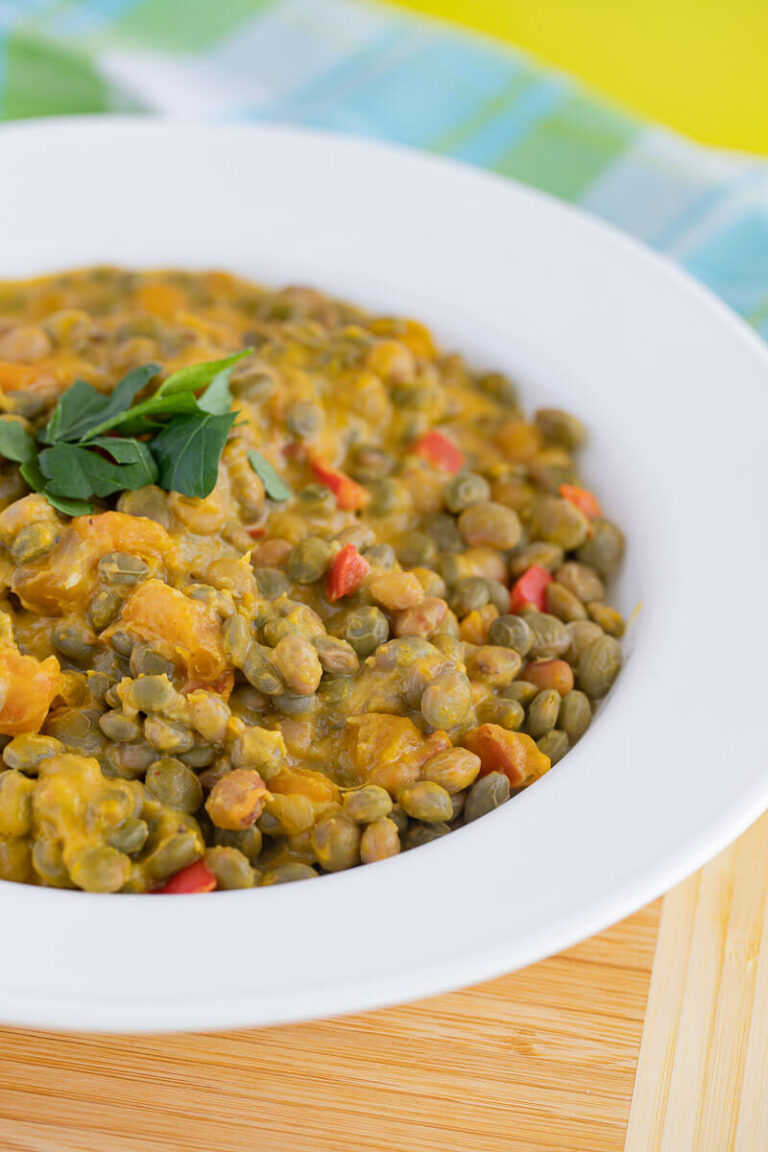Very easy Trinidad pepper shrimp recipe
If you love bold, spicy seafood, you’re in for a treat with this Trinidad Pepper Shrimp recipe. It’s fiery, flavorful, and a true Trini favorite—thanks to a delicious blend of scotch bonnet pepper, ginger, and savory seasonings.
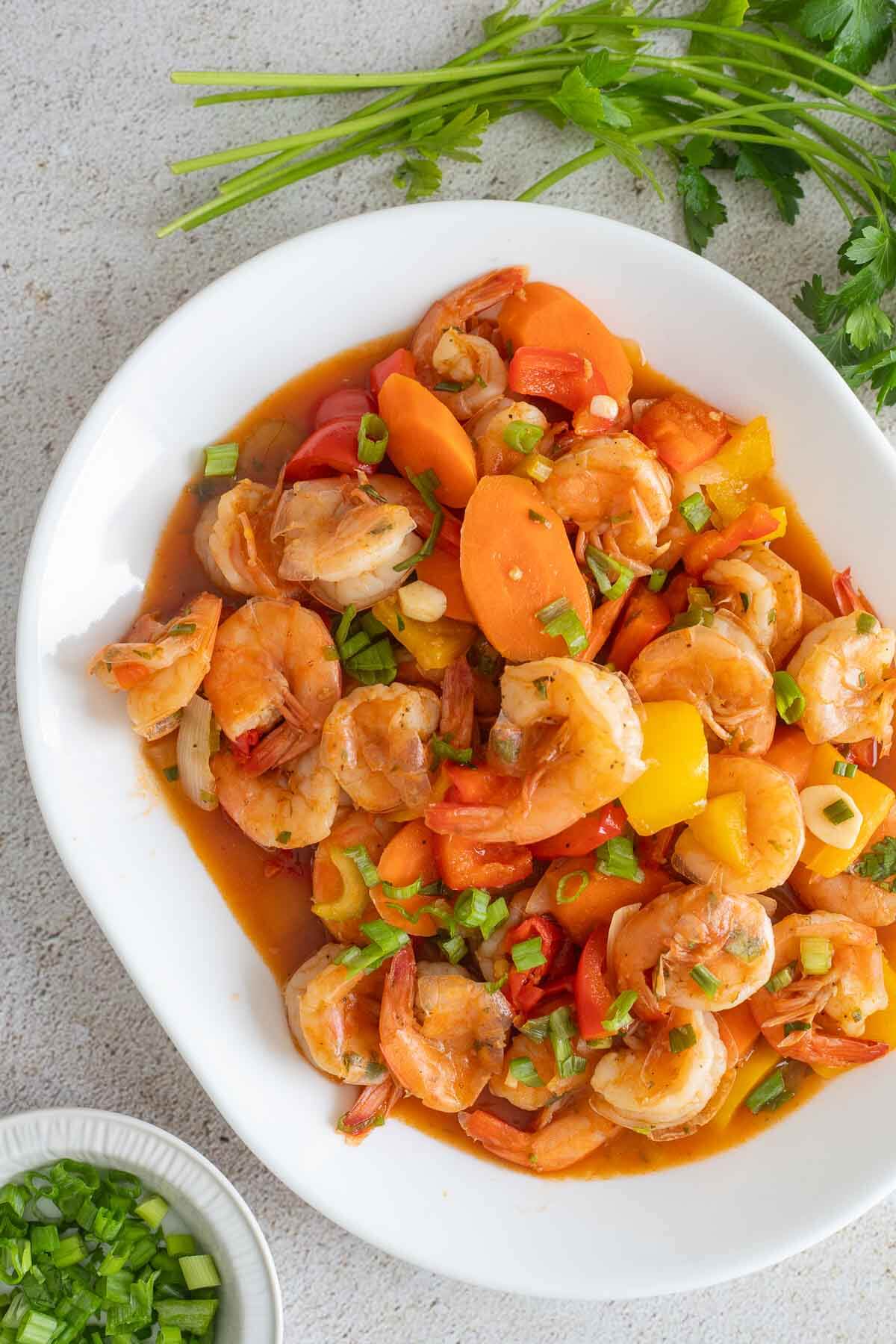
This dish brings heat and flavor in every bite, and I’m walking you through exactly how to make it at home. So let’s dive in, get those shrimp seasoned up, and bring a little island spice to your plate!
What is pepper shrimp Trini style
Trinidad pepper shrimp is a spicy, flavor-packed seafood dish rooted in Trinbagonian cuisine, known for its bold heat and savory depth. What sets it apart from other shrimp dishes—like Jamaican pepper shrimp or curry shrimp</a >—is its unique blend of seasonings, especially scotch bonnet pepper, black pepper, and fresh aromatics like ginger and garlic.
The dish reflects the Chinese influence on Trinidad’s culinary landscape, with immigrants introducing techniques and ingredients that fused beautifully with local flavors. That fusion is exactly what makes this shrimp dish stand out—fiery, fragrant, and full of flavor.
How to make Trinidad pepper shrimp
Ingredients needed for this dish
To make this dish, you’ll need a mix of fresh aromatics, vegetables, and pantry staples to build a rich, spicy, and slightly sweet sauce around the shrimp.
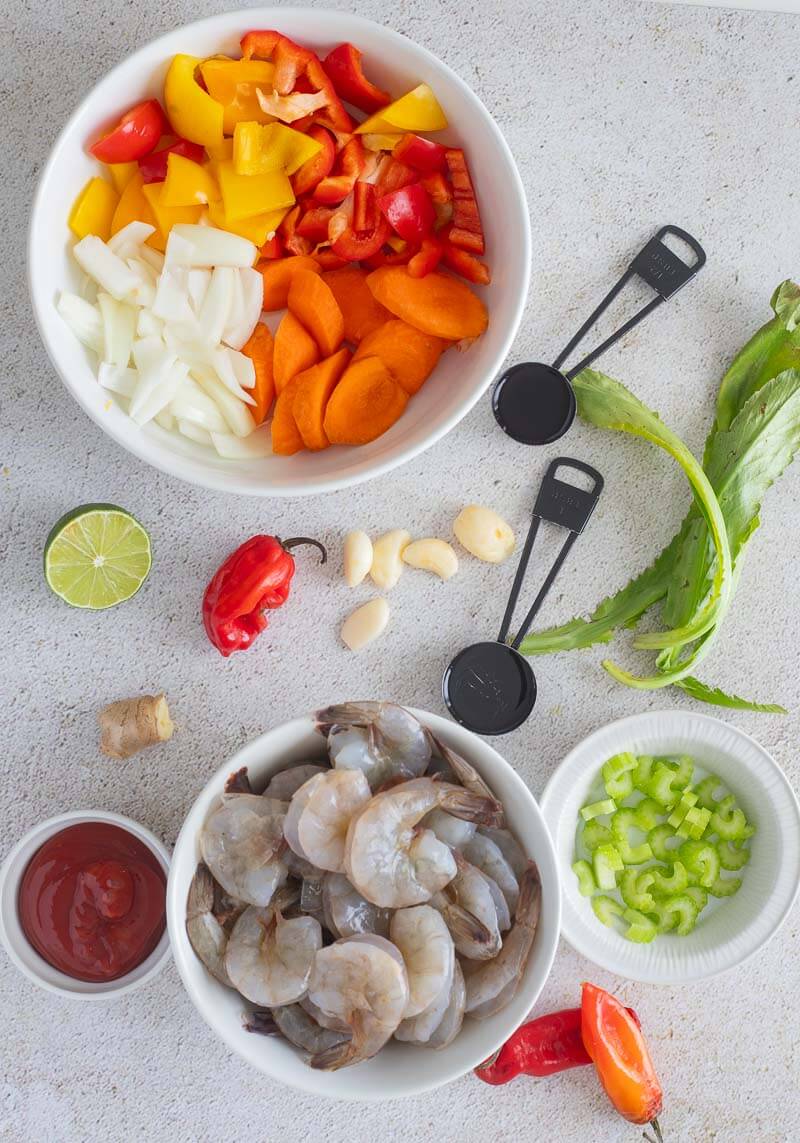
Seafood
- Raw shrimp, deveined (shell-on or off, your choice)
Sauces & Seasonings
- Soy sauce (preferably dark, low-sodium) – for umami and saltiness
- Ketchup – adds a touch of sweetness and body to the sauce
- Cornstarch (optional) – used if you want a thicker sauce
- Lime juice, salt and black pepper – for seasoning and balance
Fresh Produce
- Scotch bonnet pepper – for heat
- Pimento pepper – adds flavor without additional spice
- Sweet pepper – for crunch and mild sweetness
- Carrots – helps to balance the spice with natural sweetness
- Onion – adds savoriness and texture
- Garlic – classic savory base
- Grated ginger – gives a warm, slightly sweet kick
- Chadon beni (culantro) – for that earthy, distinctly Caribbean flavor
How to clean shrimp
Cleaning shrimp might seem like extra work, but it’s worth it for the best flavor and texture, especially if you’re using fresh shrimp. Here’s how to do it:
- Remove the head and tail by gently twisting and pulling them off.
- Peel the shell off the body.
- Rinse the shrimp under cold water to remove any debris.
- Pat dry with paper towels—this helps the seasoning stick better.
- Optional: Devein the shrimp by making a shallow cut along the back and removing the dark vein with the tip of a knife.
- Rinse again and finish with a quick wash in lime juice and water.
If you want to skip this step, you can also use frozen raw shrimp that’s already deveined—just be sure to thaw and rinse before seasoning.
Instructions
- Clean and season the shrimp. After cleaning, pat the shrimp dry and season with ginger, black pepper, garlic, chadon beni, pimento pepper, and lime juice. Mix well, cover, and let it marinate for at least 30 minutes.
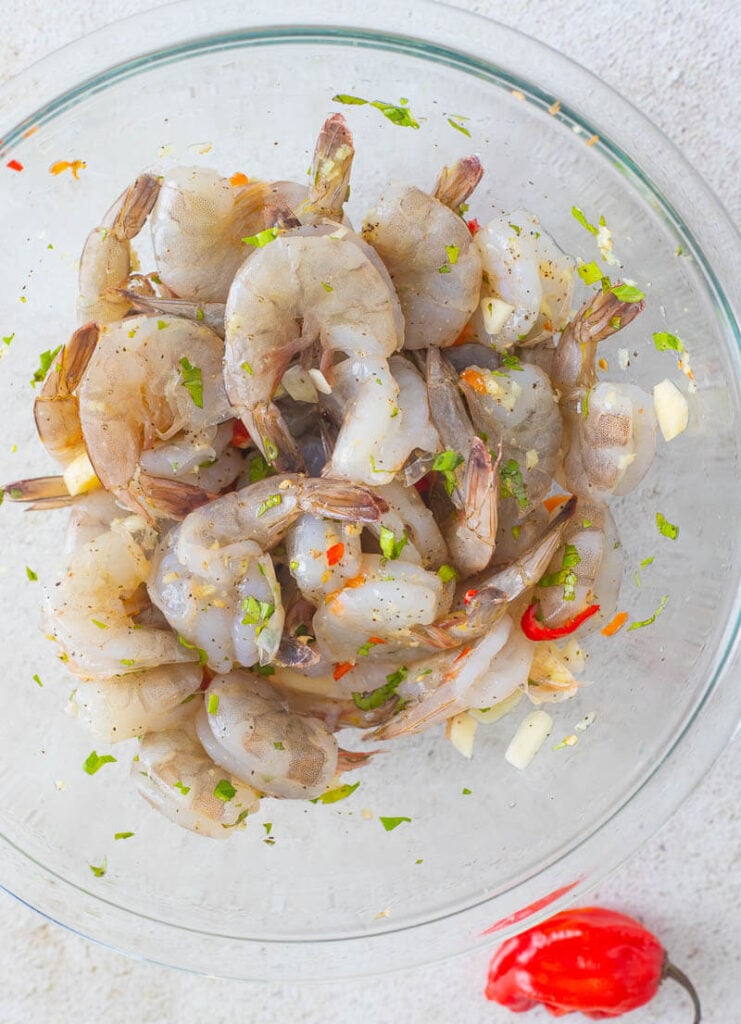
- Saute the vegetables. In a large pan (I used my 10.5″ Caraway fry pan), heat vegetable oil over medium heat. Add sliced scotch bonnet and fry for about 2 minutes. Then add onion, sweet peppers, celery, and carrots. Cook for another 2–3 minutes until slightly softened.
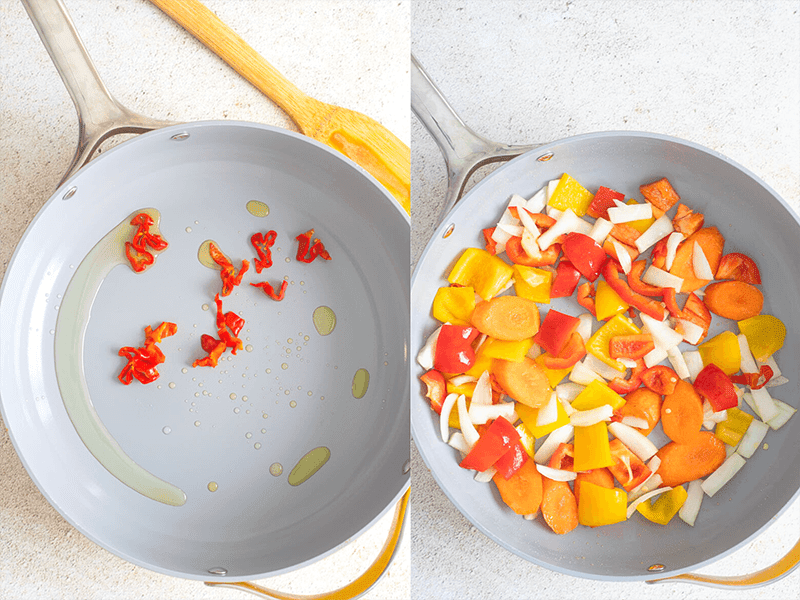
- Build the sauce. Add half a cup of water, soy sauce, and most of the ketchup. Stir to coat the vegetables well.
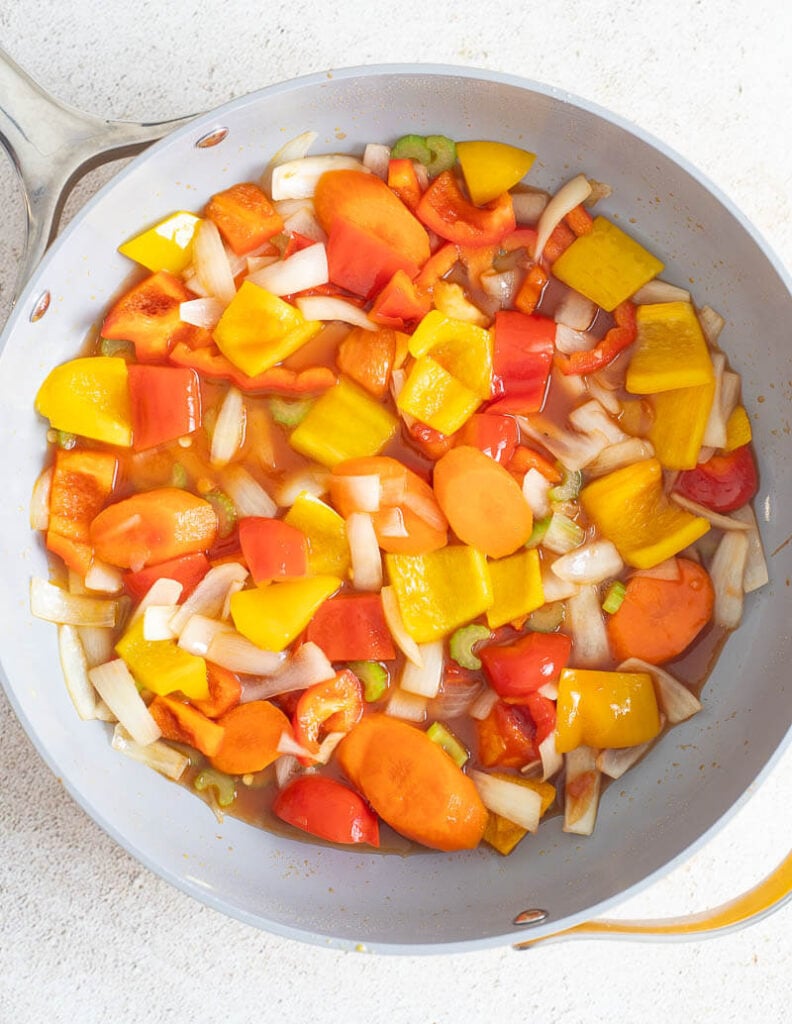
- Add the shrimp. Toss in the seasoned shrimp along with the remaining ketchup and water. Mix everything together and cook for about 4–5 minutes, just until the shrimp are cooked through and opaque.
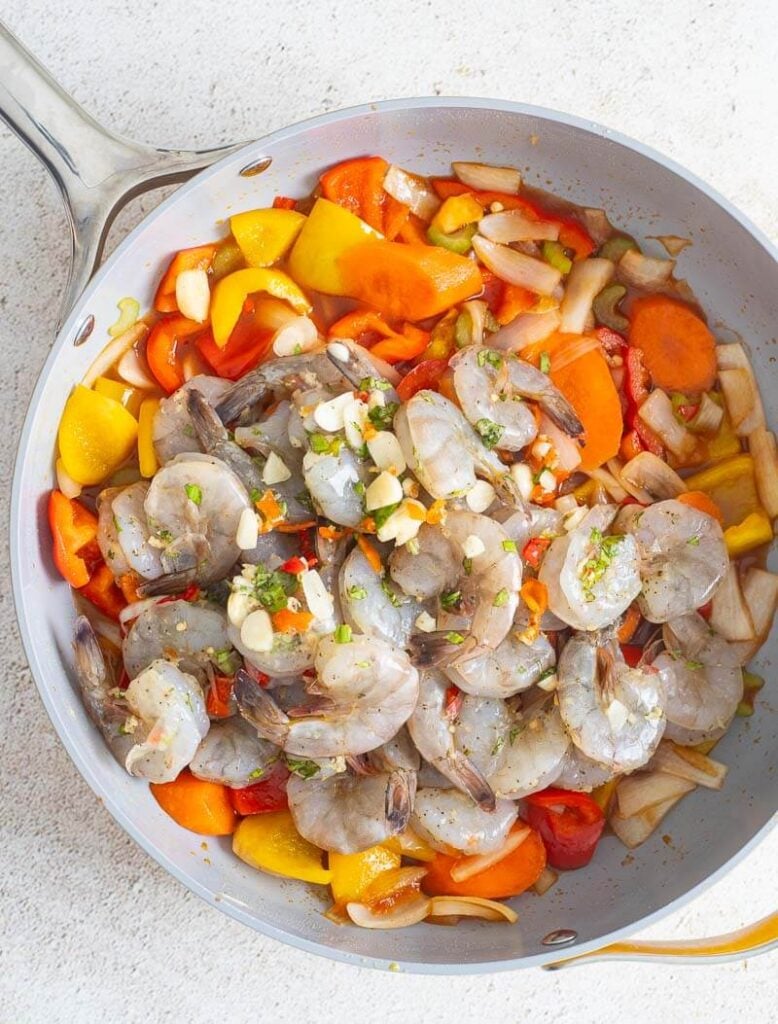
- Taste and adjust. Add more salt and black pepper if needed. Remove from the heat and let sit for a couple of minutes.
- Garnish and serve. Sprinkle with fresh cilantro and, if you like extra heat, add more sliced scotch bonnet on top. Serve hot!
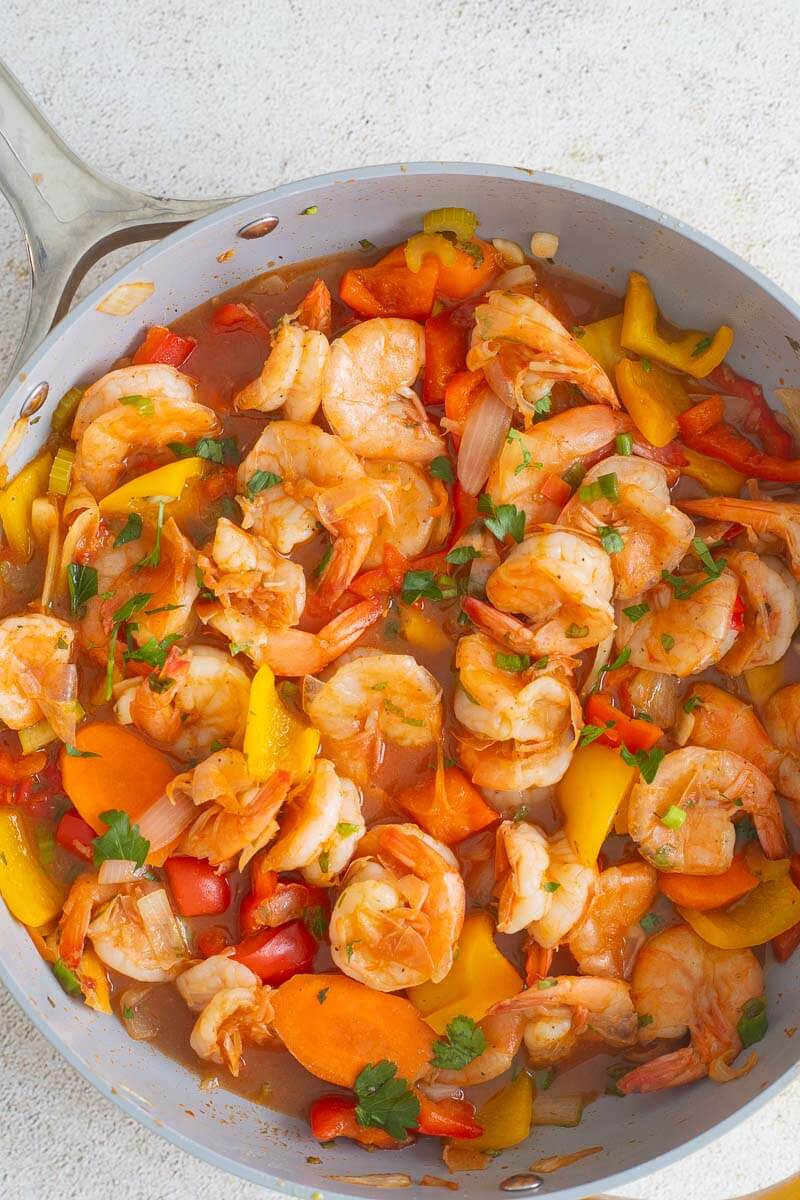
Tips and tricks
- Use jumbo shrimp for the best texture. They hold up well in the sauce.
- Already have green seasoning? Add a spoonful to the shrimp for even more flavor.
- Need to thicken the sauce? Mix 1 tablespoon of cornstarch with 1 tablespoon of water to make a slurry. Stir it in and let the sauce simmer until thickened.
- Too spicy? Add a bit more ketchup and water to mellow out the heat.
- Want more heat? Leave the pepper seeds in, or add a dash of your favorite pepper sauce.
- Try Worcestershire sauce as a substitute (or in addition to) soy sauce for a different depth of flavor.
- Add a sweet touch with pineapple chunks—they balance the spice beautifully.
Storage & Reheating
Store any leftover pepper shrimp in an airtight container in the fridge within 2 hours of cooking. It will stay fresh for up to 3 days. This helps lock in flavor and prevent it from drying out.
When reheating, make sure the shrimp reaches an internal temp of 165°F (74°C) for food safety. Reheat gently on the stovetop over low heat or in the microwave in short bursts. Only reheat what you plan to eat to avoid overcooking.
Serving Suggestions
Pepper shrimp is super versatile. It’s often served as a side dish or appetizer, but it also pairs perfectly with white rice, fried rice, or noodles. For a traditional Trini meal, serve it with callaloo, macaroni pie, or even a fresh cucumber salad.
Spicy dishes like this go great with Caribbean favorites like sorrel, mauby, or rum punch. These drinks help cool things down while keeping the vibe festive
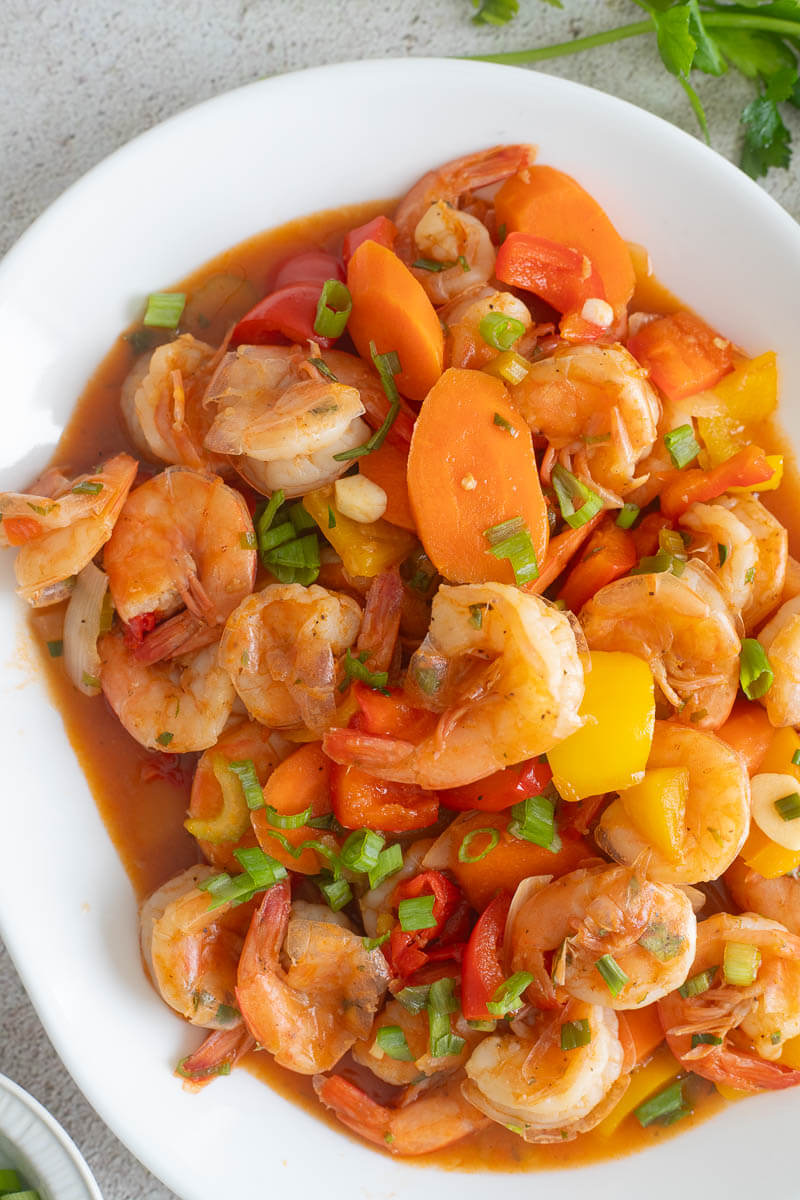
More seafood dishes
And if you’re craving more Caribbean seafood dishes, check out these favorites next:
Ready to try this Trini favorite
I hope this recipe has you excited to bring some bold Caribbean flavor into your kitchen! With its fiery kick, juicy shrimp, and savory sauce, Trini pepper shrimp is always a hit. Don’t forget, you can adjust the heat to your liking, so make it just right for you.
If you give it a try, I’d love to hear how it turns out! Drop a comment below and leave a star rating to let me know. Your feedback helps others—and it makes my day too!
Frequently Asked Questions
Trini pepper shrimp uses ginger, pimento peppers, and green seasoning, flavors that reflect the Chinese-Caribbean influence on Trinidadian cooking. Jamaican pepper shrimp, on the other hand, is often drier, with heavy vinegar and thyme and a strong scotch bonnet presence.
Definitely. Frozen raw shrimp works well—just be sure it’s deveined and fully thawed before seasoning. Give it a rinse and pat dry to help the spices stick.
Trini-style pepper shrimp usually has a light, flavorful sauce. If you prefer it drier, you can cook the sauce down a bit more or skip thickening it with cornstarch.
You can prep it in advance by cleaning and seasoning the shrimp earlier in the day. For the best texture and flavor, cook it just before serving.
Recipe

Trinidad pepper shrimp
Ingredients
Method
- Clean and season shrimp: Devein shrimp (keeping shells on). Season with ginger, garlic, salt, black pepper, lime juice, and pimento. Set aside to marinate for 1 hour.
- Sauté aromatics: Heat oil in a pan over medium heat. Add scotch bonnet and sauté for 2 minutes. Add bell peppers, carrots, onion, and celery. Cook for 2–3 minutes until just softened.
- Build the sauce: Add ¼ cup water, ketchup (reserve some), and soy sauce. Simmer for 5 minutes.
- Add shrimp: Stir in shrimp and remaining ketchup and water. Cook for 5–6 minutes, until the shrimp turns pink and is fully cooked.
- Taste and finish: Adjust salt if needed. Garnish with fresh parsley or chadon beni. Serve hot with white rice.
Nutrition
Notes
- Jumbo shrimp work best for this dish.
- Add a spoonful of green seasoning to the marinade for extra flavor.
- To thicken the sauce: mix 1 tbsp cornstarch with 1 tbsp water and stir in.
- Too spicy? Add more ketchup and water.
- For more heat, include pepper seeds or a splash of pepper sauce.
- Worcestershire sauce is a great alternative to soy.
- Pineapple chunks add a nice sweet balance if you’d like a twist.
